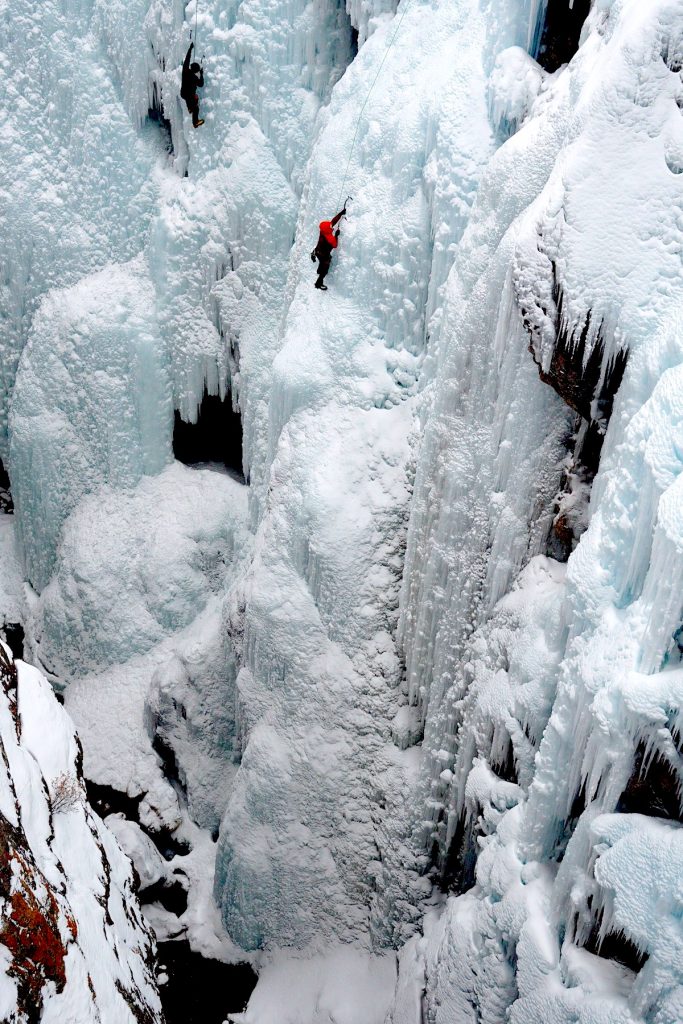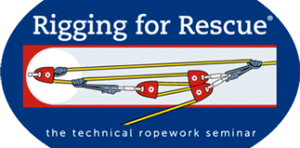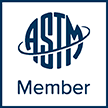Ice Conditions are Outstanding

The consistently cold start to winter has created optimal conditions for both Ouray Ice Park ice-farming as well as backcountry ice formation. The Ice Park opened for the season on Dec 19th and we have been climbing backcountry ice since before Thanksgiving. We have two open enrollment Waterfall Ice Climbing & Rescue workshops scheduled for this winter. The first available is the week of Jan 11-15, 2021: https://staging4.riggingforrescue.com/upcoming-programs/waterfall-ice-and-rescue-workshop/ The Waterfall Ice Workshop focuses on ice climbing movement skills, companion rescue, as well as lightweight, small team rescue in the winter alpine setting. Please consider joining us in 2021! Happy New Year
ITRS 2019

We just returned from the annual International Technical Rescue Symposium (ITRS) held in Albuquerque, NM. Rigging for Rescue has been attending and presenting at this event since its infancy in 1986 (NATRS at that time). The symposium is a gathering of around 170 attendees to discuss, dissect, and debate all things rescue-related. Having personally attended every ITRS save for one over the past 18 years, I left the 2019 version feeling like it was the best I had witnessed for the past decade. There were many excellent presentations over a broad mix of topics. It was inspiring to see how much effort others are putting into both critical thinking and testing to better our collective understanding of the systems we tie into on a daily basis. Rigging for Rescue principals Mike Gibbs and Kevin Koprek both presented: VT Prusiks for Rescue Belays (Gibbs) Human Factor Considerations: Rope Systems and Device Selection (Koprek) The new research on the VT Prusik has been an ongoing project of Rigging for Rescue’s dating back to our initial testing on that device presented to ITRS in 2014. The ITRS 2019 research paper, abstract, and video clips are now viewable on our website at: https://staging4.riggingforrescue.com/vt-prusik-rescue-belays/
VT Prusik for Rescue Belays

VT Prusik for Rescue Belays – Abstract Rope rescue teams typically operate redundant two-rope systems with inclusion of a failsafe mechanism for fall arrest. Examples include the MPD, 540° Rescue Belay, Petzl I’D, and Tandem Prusiks to name a few. Teams operating in remote environments with longer ingress/egress distances often favor lighter weight, multi-purpose systems and devices as part of their overall mission profile. In 2013, Rigging for Rescue began examining the Bluewater VT Prusik (configured as a Schwabisch ‘Max over One’ hitch) as an alternative to the Tandem Prusik Belay. In 2014, this author presented at ITRS quick look tests considering a variety of Aramid fiber friction hitches and configurations. Initial results for the VT Prusik were favorable and thus additional testing was warranted. Further testing was conducted in 2017 and 2019. The purpose was to critically examine the capabilities and limitations of the VT Prusik as a device suitable for managing fall arrest on a rope rescue system while lowering or raising a 200kg mass. Since the 2014 ITRS presentation, three primary areas of inquiry include: The British Columbia Council on Technical Rescue – Belay Competence Drop Test Method (BCCTR BCDTM) Human operators using a snug top-rope while lowering Raising scenarios with a snug top-rope and human operators Additionally, tests were conducted with the tensile testing machine on drop test sample ropes and Prusiks. The laboratory style tests (i.e. BCCTR BCDTM) demonstrated favorable results that were within industry acceptable performance criteria for: Maximum arrest force Stopping distance Integrity of the device and rope system The human operated tests we conducted produced results that compared favorably to other tests we have either witnessed or been made aware of utilizing Nylon TPB (with human operators). Mechanical devices with purpose-built fail-safe mechanisms will undoubtedly prove more reliable for fall arrest versus a user-configured system such as Tandem Prusiks or the VT Prusik. However, for teams with specific mission profiles that place a high value on lightweight, multi-purpose equipment, the single VT Prusik configured as a Max over One, appears to be a superior alternative to the traditional Nylon Tandem Prusik Belay. VT Prusik for Rescue Belays For more information, check out Rigging for Rescue’s video testing samples.
The Great State of Maine

[one_full last=”yes” spacing=”yes” center_content=”yes” hide_on_mobile=”no” background_color=”” background_image=”” background_repeat=”no-repeat” background_position=”left top” hover_type=”none” link=”” border_position=”all” border_size=”0px” border_color=”” border_style=”solid” padding=”” margin_top=”” margin_bottom=”” animation_type=”0″ animation_direction=”down” animation_speed=”0.1″ animation_offset=”” class=”” id=””][youtube id=”2kUZrF7iObs” width=”800″ height=”550″ autoplay=”no” api_params=”” class=””][/youtube][fusion_text]We recently returned from our biennial visit to the spectacular coast of Maine on Mount Desert Island in Acadia National Park. The training event brings together the handful of SAR teams that perform high angle rope rescues in the state. Given the small size of the state, it is not uncommon for the various Maine SAR teams to respond to mutual aid requests on more technical calls. The opportunity to train together every other autumn provides for great discussions on risk management decision-making, systems & devices, as well as agreed upon terminology for command and control. At the time of our previous visit, we identified a unique geological feature on one of the sea cliffs in Acadia. That discovery was filed away and we made plans to utilize it at the next training. We dubbed the feature the Crack of Doom. The approach to the fissure was unremarkable and you would not have suspected there was a narrow 25m slot going right down to the Atlantic. There was even an existing social trail frequented by visitors that passed only 4-5m uphill from where the crack originated, yet offered no indication of its existence. Apparently there was a fatality in recent history whereby a visitor slipped and fell into the slot while approaching too close. It seemed to be a worthwhile ropework objective. We spanned the slot with an artificial high directional device and lowered a participant into place on a 2-rope system to act as the stranded Subject. The ropework puzzle was solved using some confined space techniques such as lowering the rescuer on parallel pulley systems for the eventual pickoff. We secured the Subject on a small jigger system to allow the Attendant the ability to easily adjust their relative position during the raise. Additionally, the vertical stagger of the Attendant and Subject allowed the rescuer to clear the confined space entry hole at the top first and then stop the two-rope raising system; from there, the rescuer raised the Subject through the hole using the jigger system and did not have to rely on commands to move the Subject through what was a very narrow slot. It was a great exercise requiring very precise rope alignment as well as team coordination. It is always a privilege to travel to the great state of Maine for rope rescue trainings and we look forward to the next visit in 2021. [/fusion_text][/one_full][separator style_type=”none” top_margin=”” bottom_margin=”” sep_color=”” border_size=”” icon=”” icon_circle=”” icon_circle_color=”” width=”” alignment=”” class=”” id=””]
West Metro Fire
Rigging for Rescue recently traveled to Colorado’s Front Range to work with a group of firefighters from multiple agencies around the state. The course was hosted by West Metro Fire and was a great training with highly skilled participants. Included in the exercises were difficult edge transitions with a vertically oriented litter, a deflection line, work with artificial high directionals, and a two-attendant moderate slope evacuation, as seen in the gallery below. We can’t wait to return in 2013!
Update and Beyond, Ouray 2012
Once again, a great crew of participants traveled to Ouray, Colorado to attend a Rigging for Rescue Update and Beyond Seminar. This seminar is open only to previous Rigging for Rescue seminar participants. The next Update and Beyond Seminar will be held in Yosemite, California in October. Check out our website for more information.
Difficult Edge Transitions
Difficult edge transitions are among the more challenging scenarios one may encounter rope rescue. Occasionally, situations arise when a team must negotiate an abrupt edge with no high directional, and the patient condition does not allow for a vertical litter orientation. In these circumstances, a smooth operation hinges on a strong and coordinated litter attendant, strength and technique from the edge personnel, and polished command and communication. The clips below exhibit a well-executed difficult edge transition.




